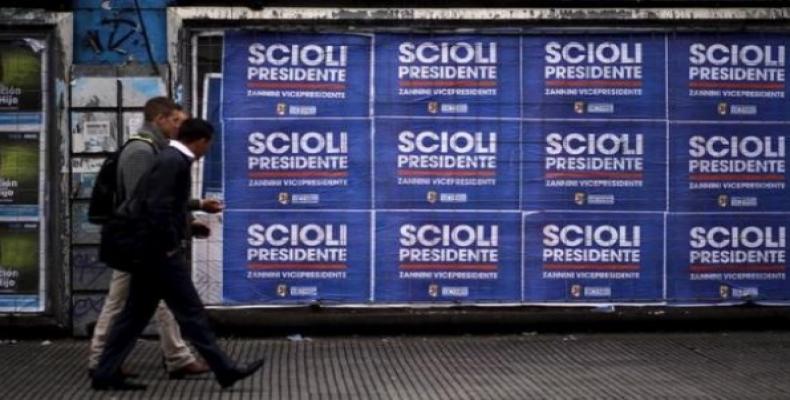Buenos Aires, October 22 (teleSUR-RHC)-- After 12 years of rule by Cristina Fernandez and her late husband, Nestor Kirchner, Argentinians go the polls October 25th to elect a new president. Through primaries, each party has elected their candidate through a popular vote.
In the primary on August 9, the Kirchnerite candidate, Daniel Scioli, won 38.4 percent of the vote, the conservative candidate Mauricio Macri won 30.1 percent, and the renegade Peronist candidate Sergio Massa won 14.2 percent. These are the three favorites for presidency.
Margarita Stolbizer (Progressives), Nicolás del Caño (Left Front), Adolfo Rodríguez Saá (Federal Commitment) also passed the 1.5 percent threshold to appear on Sunday’s ballot but are very unlikely to win.
In brief, a Scioli presidency will have the most continuity with the current policies of President Fernandez, while Macri represents the biggest break and a return to the neoliberalism seen in the 1990s. Massa occupies an intermediate position.
Despite their differences, though, they all have a similar style. The leading candidates portray themselves as figures who are beyond ideology and prefer consensus politics. But the influence of Kirchner is strong, with Scioli likely to follow her lead and even the conservative Macri saying he would keep many of her policies.
Scioli is the favorite, but he has to win at least 40 percent of the vote and 10 percent more than the first runner-up or else the election will go to a runoff on November 22 between the two top candidates. At the moment, a runoff seems likely. It would be the first since it became law in 1994.


